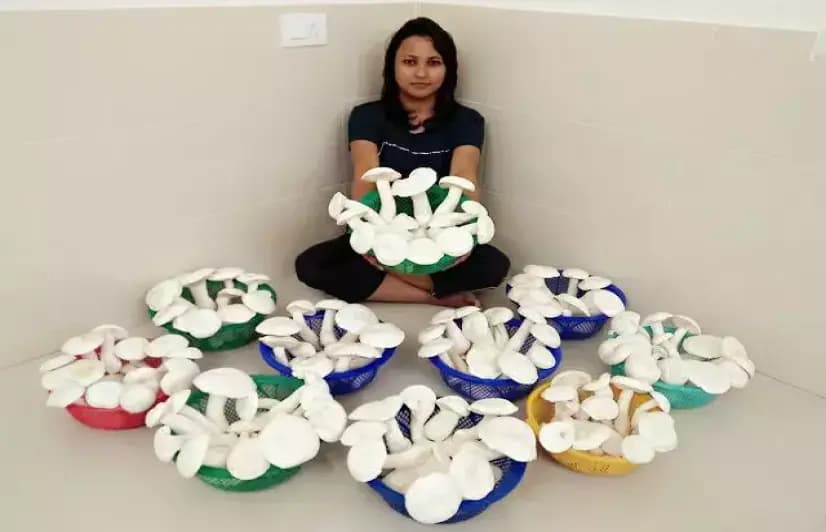Toxic masculinity driving crimes against women in India
Bengaluru, Karnataka: Recently, a budding actress was stabbed in Mumbai allegedly by a producer whose marriage proposal she had turned down. In another incident, 20-year-old Nikita Tomar was shot dead outside her college by two men in broad daylight during an abduction bid in Ballabgarh. Her assailants allegedly wanted to have her convert her religion and marry him. Before that, a 21-year-old patient was raped while she was on ventilator support in the ICU of a private hospital in Gurugram.There are many incidents like these in India. As many as 87 rapes were reported every day in 2019 on an average. According to the National Crime Records Bureau’s ‘Crime in India-2019’ report, 45,485 cases of crimes against women were registered during 2019. This is 7.8% more cases than 2018. Most of the cases perpetrated against women came under these categories: Cruelty by Husband or his Relatives (30.9%); Assault on Women with Intent to Outrage her Modesty (20.2%); Kidnapping (19.3%); and Rape (7.3%), the report added. A report by Thomson Reuters Foundation stated that India was the most dangerous country to live in for women in 2018. The report mentions six main areas of problems. Area of problemsManifestation of the problemCulture & religionAcid attacks, female genital mutilation, child marriage, forced marriage, punishment/retribution through stoning or physical abuse or mutilation and female infanticide/foeticideSexual violenceRape as a weapon of war, domestic rape, rape by a stranger, the lack of access to justice in rape cases, sexual harassment and coercion into sex as a form of corruption. Non-Sexual ViolenceConflict-related violence and forms of domestic physical and mental abuseDiscriminationJob discrimination, inability to make a livelihood, discriminatory land, property or inheritance rights, lack of access to education and lack of access to adequate nutritionHuman TraffickingDomestic servitude, forced labour, forced marriage and sexual slaveryHealthMaternal mortality, lack of access to healthcare, lack of control over reproductive health and HIV/AIDSThe psychology behind itBut why is the number of crimes against women increasing in India? The psychology team at The Mind Research Foundation (TMRF), a mental health organisation based out of Bengaluru, has identified some psychological traits in the Indian society that play a part in enabling these crimes. It says unequal distribution of power in the society, where men are the default head of the family, puts women in a position of disadvantage. Men use violence to 'put women in their place' and to assert their dominance.“Men are more likely to commit violence against women if they have a history of child maltreatment, limited education, exposure to domestic violence against their mothers, harmful use of alcohol, learned behaviour from the male figures in the family and unequal gender norms, which include attitudes that normalise the use of violence, and a sense of entitlement over women, poor conflict-resolution and relationship skills,” says Dr Vishwakirti Bhan Chhabra, co-founder, TMRF.The TMRF’s analysis found that men in general have a poor understanding of women's consent. The TMRF says this is one of the reasons these men have no qualms in imposing themselves on women and dominating them. According to the TMRF’s findings, men have their reasons to justify why it is fine to go against a woman’s consent; this mentality reflects in boys teasing or stalking girls, husbands forcing themselves on their wife (believing it to be their marital right) or women being objectified at work.Further, the TMRF analysis found that men feel vindicated or encouraged by statements such as “boys will be boys” or by the society’s general dismissal of domestic violence as a family’s internal matter. The TMRF says heinous crimes such as murder or assault have their roots in such enabling tendencies of the society.“Several men may seek out their prey for the sake of sexual gratification while also trying to re-establish their primal need to be treated as the alpha figure. Masculinity and its characteristics may be the key to understanding why such crimes are being committed,” Dr Chabra says.

Fee hike or just the hype? What youngsters think about JNU protests
On October 29, the students of Jawaharlal Nehru University (JNU) carried out a protest against the introduction of new hostel policies, which included curfew restrictions and fee hike among other things, by the administration. Since then, JNU students have been protesting against the hike saying that it will cause the students from financially challenged backgrounds to drop out, as 40% of the students in JNU belong to the below poverty line (BPL) category. The fee hike will increase the annual fee for JNU students living in hostels from the current Rs 27,600-32,000 to Rs 55,000-61,000, reported The Print. With the revised fee structure that will come into effect next year, JNU is set to become the most expensive central university. The administration introduced a partial roll-back for BPL students on November 13 and have told the committee formed by the government that the university is running a financial deficit of over Rs 12 crore, which is the reason behind the hike. Why can't students from above poverty line pay more? Shiv Jha, an engineering graduate from Kolkata The fee hike in JNU is justified because it’s the first time in 19 years that it's hiked while keeping in mind the current inflation and market. The students are from varied backgrounds, and while the 40% of the students belong to the underprivileged category, the rest 60% is also enjoying the same kind of benefits and those students should be charged and only students who need economic assistance should get the benefits of the subsidised rates. The fee charged from the rich should be used to help the poor. The university will also levy a service charge of Rs 1,700 per month, which is a great move since that money will be used to improve the infrastructure. While the other institutes face constant fee hikes, JNU shouldn’t be an exception. It is unfair to the students of other government-funded institutions such as IITs and NITs who pay much higher fees than students of JNU even after the fee hike. The return on investment on people from these institutes is also high since they help improve the economy of the country. However, the return on investment of these JNU students is not much, and they hardly contribute to the country’s growth. Even after getting so many subsidies from the government, they are not doing good for the country. We, the taxpayers, pay their fees and they are hardly contributing anything to society. Apart from that, they are protesting against the curfew of 11 pm. Every university in the country has a curfew so it is irrelevant to argue for timings. The enforcement of curfew will only increase the security inside the campus. The students can sleep, study in the hostel and a proper discipline will be maintained. Students will stick to their aim rather than roaming around in the night. We have seen the best institutes are those, where there is rule enforcement like the armed forces. So whatever the JNU students are doing is just a publicity stunt. It's a fight for the rights of all the students Kapil Kajal, an engineering graduate from Lingaya's University, Faridabad The students of JNU are not only fighting for their rights but also fighting to improve the Indian education system. What they are doing is totally justified because increasing fees from the institutions are taking away India’s dream of educated youth and is oppressing the already marginalised groups. The students of JNU are not the only ones protesting, students from IIT Bombay, IIT BHU and Ayurveda colleges in Uttarakhand are also protesting fee hikes in their respective institutes. The best universities in the world are totally free or subsidised and the government in the developed countries hope to provide subsidised education. India spends only 3.8% of the country’s Gross Domestic Product (GDP) on education, which is less than what Bhutan, Zimbabwe or Kenya allocate to education. The government underspends the budget allocated for education in four out of the last five years, which amounted to Rs 4 lakh crore. JNU is one of India’s best universities, and it is the only Indian university apart from Delhi University which appeared in the Times Survey of the top 500 humanities universities in the world. The National Assessment and Accreditation Council gave JNU the maximum Grade A++ ranking, which shows that it’s a model institution for others to follow. A sudden increase in fees will affect the education of students who belong to the BPL category. Not only in JNU, but the fees should also be reduced everywhere with time, not increased. Increasing the fee will increase the load on parents, and parents who are still facing the problems to give the fees of their children, they won’t be able to manage due to rising inflation. And if we can give subsidies to our politicians and construct the world’s tallest statue, our students shouldn’t have to bear the brunt of the government’s misplaced priorities.On October 29, the students of Jawaharlal Nehru University (JNU) carried out a protest against the introduction of new hostel policies, which included curfew restrictions and fee hike among other things, by the administration. Since then, JNU students have been protesting against the hike saying that it will cause the students from financially challenged backgrounds to drop out, as 40% of the students in JNU belong to the below poverty line (BPL) category. The fee hike will increase the annual fee for JNU students living in hostels from the current Rs 27,600-32,000 to Rs 55,000-61,000, reported The Print. With the revised fee structure that will come into effect next year, JNU is set to become the most expensive central university.The administration introduced a partial roll-back for BPL students on November 13 and have told the committee formed by the government that the university is running a financial deficit of over Rs 12 crore, which is the reason behind the hike.Why can't students from above poverty line pay more?Shiv Jha, an engineering graduate from KolkataThe fee hike in JNU is justified because it’s the first time in 19 years that it's hiked while keeping in mind the current inflation and market. The students are from varied backgrounds, and while the 40% of the students belong to the underprivileged category, the rest 60% is also enjoying the same kind of benefits and those students should be charged and only students who need economic assistance should get the benefits of the subsidised rates. The fee charged from the rich should be used to help the poor.The university will also levy a service charge of Rs 1,700 per month, which is a great move since that money will be used to improve the infrastructure. While the other institutes face constant fee hikes, JNU shouldn’t be an exception. It is unfair to the students of other government-funded institutions such as IITs and NITs who pay much higher fees than students of JNU even after the fee hike. The return on investment on people from these institutes is also high since they help improve the economy of the country. However, the return on investment of these JNU students is not much, and they hardly contribute to the country’s growth. Even after getting so many subsidies from the government, they are not doing good for the country. We, the taxpayers, pay their fees and they are hardly contributing anything to society. Apart from that, they are protesting against the curfew of 11 pm. Every university in the country has a curfew so it is irrelevant to argue for timings. The enforcement of curfew will only increase the security inside the campus. The students can sleep, study in the hostel and a proper discipline will be maintained. Students will stick to their aim rather than roaming around in the night. We have seen the best institutes are those, where there is rule enforcement like the armed forces. So whatever the JNU students are doing is just a publicity stunt. It's a fight for the rights of all the studentsKapil Kajal, an engineering graduate from Lingaya's University, FaridabadThe students of JNU are not only fighting for their rights but also fighting to improve the Indian education system. What they are doing is totally justified because increasing fees from the institutions are taking away India’s dream of educated youth and is oppressing the already marginalised groups. The students of JNU are not the only ones protesting, students from IIT Bombay, IIT BHU and Ayurveda colleges in Uttarakhand are also protesting fee hikes in their respective institutes. The best universities in the world are totally free or subsidised and the government in the developed countries hope to provide subsidised education. India spends only 3.8% of the country’s Gross Domestic Product (GDP) on education, which is less than what Bhutan, Zimbabwe or Kenya allocate to education. The government underspends the budget allocated for education in four out of the last five years, which amounted to Rs 4 lakh crore. JNU is one of India’s best universities, and it is the only Indian university apart from Delhi University which appeared in the Times Survey of the top 500 humanities universities in the world. The National Assessment and Accreditation Council gave JNU the maximum Grade A++ ranking, which shows that it’s a model institution for others to follow. A sudden increase in fees will affect the education of students who belong to the BPL category. Not only in JNU, but the fees should also be reduced everywhere with time, not increased. Increasing the fee will increase the load on parents, and parents who are still facing the problems to give the fees of their children, they won’t be able to manage due to rising inflation. And if we can give subsidies to our politicians and construct the world’s tallest statue, our students shouldn’t have to bear the brunt of the government’s misplaced priorities.

Eradicating migration and unemployment by mushroom cultivation
Chamoli, Uttarakhand: A resident of the remote district of Chamoli in Uttarakhand, agri-entrepreneur Divya Rawat, 27, was determined to combat the menace of migration and unemployment plaguing the state. With her initiative, ‘Mushroom Mission’, she has been able to train almost 5,000 people, out of which 60% are women and youth, in mushroom cultivation. After receiving the training, people who were willing to migrate for as less as Rs 4,000, are now able to earn as much as Rs 2 lakh per crop cycle, depending on their investment.Rawat moved to Delhi for her graduation and post-graduation and started working at an NGO soon after finishing her studies. However, when she realised how disastrous the rapid migration was proving to be for Uttarakhand, she quit her job and went back to her home state determined to change the situation. Uttarakhand has seen over 3.83 lakh people migrate, out of which 50% migrated in search of livelihood, from the villages in the last 10 years, according to a report by Uttarakhand Rural Development and Migration Commission (URDMC). After quitting her job, Rawat started Soumya Foods Private Limited in 2013 and subsequently the ‘Mushroom Mission’, which enables people to cultivate mushroom indoors. “There are people who started small farms earning about Rs 5,000 and slowly within three years, they increased the size of farms and now they earn in lakhs,” she stated.She pointed out that she chose mushroom cultivation after researching on marketing parameters, and found out the huge difference between the wholesale price of onion and potato, which is around Rs 10 per kilogramme, and mushroom, which is Rs 100 per kilogramme.She trained at the Indian Council of Agricultural Research-Directorate of Mushroom Research in Solan and found out that since it is cultivated indoors, wild animals and natural calamities, which are the two biggest threats to agriculture in the state, won’t affect the crop. She mentioned that for mushroom cultivation, only the temperature needs to be regulated and not the air or water. She highlighted that mushroom cultivation can be done round-the-year with a crop cycle of two months.Scaling upAs per the 2011 Census, 1,053 of Uttarakhand’s 16,793 villages have no inhabitants and another 405 have a population of less than 10. Since 2011, 734 villages have become uninhabited. To solve this, Rawat scaled up and started training people to give them a means of livelihood. A resident of Chamoli, Priya Tyagi, 22, a housewife who cultivates mushrooms, stated that she wanted to always do something on her own, but since she got married at 18, her in-laws didn’t allow her to work. She then underwent training under Rawat and is now cultivating mushroom around her house. As per the URDMC report, youths constitute the highest number of those who migrated from Uttarakhand—42% are in the age group of 26 to 35, while 29% are over 35 and 28% below 25.Virender Singh Sajwan, 35, a resident of Dehradun and a mushroom entrepreneur, stated that he moved from Bengaluru to his hometown and now he cultivates mushrooms and earns Rs 20,000 each month. Migration can lead to unplanned urbanisation, especially in plains. The economic process is also concentrated in the plains which will widen the income gap between plains and hills. This will also increase human-animal conflict and water stress in the plains. Rawat highlighted that only big cities can’t take everyone’s load as there are limited resources. So, the solution to migration is to create opportunities that will develop the country and even effectively manage problems like pollution, education or health, she opined.

Write For 101Reporters
Follow Us On
101 Stories Around The Web
Explore All News